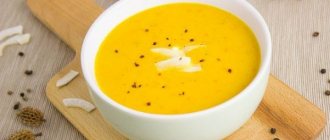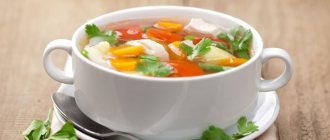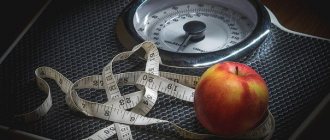What are the benefits of the buckwheat diet?
Buckwheat has long been nicknamed the queen of cereals. She received such an honorary title for a reason. Buckwheat contains many vitamins, micro- and macroelements necessary for the normal functioning of the human body. Buckwheat is also a source of protein, which is 100% digestible.
Buckwheat contains minerals such as iodine, iron, copper, zinc, and phosphorus. The cereal contains all B vitamins, vitamin E, and vitamin PP. In addition, buckwheat is an excellent source of coarse fiber and fiber, healthy amino acids and carbohydrates. Buckwheat is recommended for vegetarians as an alternative to meat, because the protein from buckwheat is very similar to the protein from meat.
There are 313 kcal per 100 g of cereal, which, in turn, are made up of:
- 62.1 g are carbohydrates;
- 14 g is water;
- 12.6 g are proteins;
- 3.3 g is fat.
Although the calorie content of buckwheat is quite high, this product allows you to get rid of excess weight by speeding up your metabolism.
The beneficial properties of this cereal are as follows:
- Buckwheat allows you to cleanse the body.
- It quickly quenches the feeling of hunger and keeps you feeling full for a long time.
- Thanks to buckwheat, you can get your weight in order, for example, get rid of a few extra pounds gained during pregnancy or during long holidays.
- Buckwheat is a product that can be used to prevent cancer, as it contains flavonoids.
- Regular consumption of buckwheat will help avoid blood clots and reduce the risk of developing heart and vascular diseases.
- Buckwheat helps normalize blood cholesterol levels.
- Buckwheat is a product that can be consumed by people with diabetes. Due to the fact that the glycemic index of cereal is low, blood sugar rises gradually and not abruptly. Therefore, carbohydrates from buckwheat are classified as “slow” and healthy.
Beneficial properties of buckwheat
As previously mentioned, one of the most significant results of the buckwheat diet in relation to the human body is considered to be the cleansing of its gastrointestinal tract from various harmful components. A fairly large amount of insoluble fiber in the structure of buckwheat helps the rapid physiological removal of various toxins and toxic elements from the intestinal tract, which subsequently helps get rid of “bad cholesterol,” excess sugar and other negative components.
In addition, buckwheat helps correct constipation, stops the appearance of stones in the gall bladder and kidneys, and stops the formation of atherosclerosis and other disorders of the liver and heart.
Buckwheat is rich in flavonoids, including rutin, which exhibits bactericidal, anti-inflammatory and antioxidant effects on the entire human body.
Pros of the buckwheat diet
The buckwheat diet has obvious advantages:
- It cleanses the body of toxins;
- All dishes on the menu are very easy to prepare;
- The weight comes off quite quickly;
- The body receives many useful substances;
- The feeling of hunger will not bother you for a long time.
The basis of the buckwheat diet is steamed buckwheat kupa. A glass of buckwheat is poured with boiling water (400 ml), the container is insulated and left overnight. In the morning the porridge will be ready. It should be eaten in several sittings, without adding salt or other seasonings.
Cons of the buckwheat diet
The buckwheat diet has a number of disadvantages, including the following:
- Avoiding salt and sugar consumption can have a negative impact on blood pressure and brain function. If a person feels tired and weak, then in the morning you can drink a glass of water with a spoonful of honey diluted in it.
- Two weeks is the maximum period of continuous adherence to the buckwheat diet. You can repeat the diet plan only after 2 months.
- In order to survive on a buckwheat diet, you need willpower, since the dishes do not differ in variety and rich taste.
You need to exit the diet correctly. You should eat in small portions, choosing foods with low calorie content. Otherwise, the lost kilograms will return very quickly.
What foods can buckwheat be consumed with?
During the diet, you can consume 1% kefir without additives. In this case, yoghurts, sourdoughs or buttermilk are not suitable. These dairy products contain a high percentage of carbohydrates and sugar. If you feel very strong attacks of weakness, then you can dilute your monotonous diet with dried fruits or apples. You should not eat grapes or bananas as they are very high in calories. It is very useful to eat grapefruits on a diet, since the body spends additional calories to absorb them.
Find out the benefits, harms and calorie content of buckwheat with milk.
Rules for following the buckwheat diet
Buckwheat is a product that allows you to simultaneously lose weight and get rid of heaviness in the stomach. If you do additional exercise, the muscles in the waist area quickly tighten, and fat disappears from the sides. By following all the recommendations, you can get rid of 5-6 kg in a week on a buckwheat diet.
It is very good to visit the pool or go to the fitness room during a diet. To support the body, you can additionally take vitamin and mineral complexes.
How to eat on a buckwheat diet:
- Cereals should be consumed in their pure form. You cannot add salt, oil, milk, spices, etc. to it.
- Buckwheat should be steamed, not boiled. The effect will be better.
- The combination of cereal and kefir allows you to avoid feeling hungry for longer.
- To prevent the water-salt balance in the body from being disturbed, you need to drink clean water without gas; you can replenish fluid reserves with herbal decoctions and green tea.
- You need to drink at least 1.5 liters of water per day.
- You should expect that by the end of the diet, the weight loss process will accelerate and your appetite will decrease.
Helpful Tips:
- If weakness occurs or dizziness occurs, you can add a small amount of salt to the buckwheat. This will allow you to slightly retain fluid in the body and get rid of the ailment.
- If you experience an unbearable feeling of hunger, which is accompanied by a deterioration in your health, then you can move away from the diet a little and add other foods. In any case, you should not risk your health.
- You should not start dieting during or just before your period.
How to get out of a diet correctly
It is worth paying special attention to the issue of quitting the diet. If you abruptly return to your normal diet, the lost kilograms will return, perhaps even with additional ones. Such methods of losing weight are very harmful to the body, so you need to gather all your willpower and lose weight without failure.
Did you know? Many people consider buckwheat to be a native Russian product, although in fact its homeland is Northern India. It appeared in Rus' thanks to Byzantine merchants.
There is a rule: no matter how many days the weight loss lasts, the recovery should continue, during which you need to eat 600 kcal. Then you need to add 100 kcal per day, starting from the 4th day after the diet. You need to reach the norm of 1400–1500 calories. Such gradual adaptation will not be stressful for the body. During the diet, you should not actively engage in sports, since the body is already quite weakened.
Video: the right way out of the diet
Buckwheat diet menu
The buckwheat diet menu involves eating various dishes based on this grain. Therefore, it is necessary to try to diversify it as much as possible. A sample meal plan for a week looks like this:
- Day 1:
- Breakfast: steamed buckwheat, a glass of kefir.
- Lunch: buckwheat cutlets, 2 glasses of kefir.
- Dinner: buckwheat in the form of a casserole, a glass of kefir.
- Day 2:
- Breakfast: buckwheat bread, tea without sugar.
- Lunch: steamed buckwheat pancakes, 2 cups of kefir.
- Dinner: a glass of low-fat kefir and an orange.
- Day 3:
- Breakfast: 1 serving of buckwheat porridge, a glass of mineral water.
- Lunch: 2 servings of buckwheat porridge, a glass of kefir.
- Dinner: 2 servings of buckwheat porridge, a glass of mineral water.
- Day 4:
- Breakfast: steamed buckwheat pancakes, buckwheat bread.
- Lunch: a portion of steamed buckwheat and a glass of kefir.
- Dinner: buckwheat and vegetable salad.
- Day 5:
- Breakfast: boiled egg, steamed portion of cereal, 1/3 cup of kefir.
- Lunch: bread, tea without sugar, buckwheat with fresh cabbage.
- Dinner: a portion of buckwheat porridge, green salad.
- Day 6:
- Breakfast: a glass of kefir and a portion of buckwheat porridge.
- Lunch: buckwheat with fried onions, apple.
- Dinner: cereal cutlets, banana.
- Day 7:
- Breakfast: a portion of buckwheat porridge, mineral water.
- Lunch: 2 servings of buckwheat porridge, a glass of kefir.
- Dinner: 2 servings of buckwheat porridge, water.
Although the diet is quite strict, it allows for small additions to the menu. For example, you can diversify your diet with vegetables or fruits. However, you should not get carried away too much, otherwise the effect will not be achieved.
How long can you “sit”
The duration depends on how many extra pounds you need to lose. And also on the state of health and willpower of the person losing weight. There are five diet options in total.
- Three days. A short-term diet is buckwheat porridge for 3 days. It is distinguished by its simplicity, safety, ease of use and effectiveness. Only cereals and water are consumed. As a result, you can “lighten” by 3-4 kg.
- Five days. Limited diet for five days. Fruit consumption is allowed here. It is not recommended to do hard mental and physical work. There is also no need to overeat before, during or after the diet. Weight loss is 3-5 kg. A repeated approach is allowed after a week, then you need to allow the body to recover for at least a month and a half.
- A week. Within 7 days, with a strict regime, you can lose up to 10 kg. If this is a softer option, then it takes about 5-7 kg. A mono-diet will not cause damage to your health if you follow all the rules. To improve results, moderate exercise is allowed.
- Ten days. A ten-day dietary restriction can also help you lose 10 kg of excess weight. The option is especially popular before the start of the beach season. It is used both for slightly overweight and for obesity.
- Two weeks. The most long-term and quite complex is the buckwheat diet for 14 days. It’s quite difficult to do without snacks here, so they are allowed. The maximum is 14 kg of weight lost. Since the diet here is more gentle, the weight comes off more slowly, but the results last longer.
How to cook buckwheat deliciously?
A buckwheat diet involves eating not boiled porridge, but steamed cereal. The recipe is very simple. Buckwheat needs to be sorted and washed in advance. The volume of cereal is 1 glass. Then it is poured into a saucepan and poured with 1-1.5 cups of boiling water. If there is some liquid left in the pan the next morning, you can simply drain it.
Ideally, buckwheat should be steamed in a container made of clay and covered with a warm towel. You need to leave the porridge overnight, in the morning it will be ready to eat.
Another simple and modern option for preparing buckwheat is steaming it in a thermos. She will “get there” very quickly, literally in 2 hours.
You can pour cold water over the cereal, bring it to a boil and turn off the heat. This kind of porridge will still need time to become soft.
Of course, you can use the standard method of preparing buckwheat and boil it until tender. However, it is steamed cereal that retains maximum beneficial properties and also contains more coarse fiber, which cleanses the intestines.
As for taste, steamed porridge is practically no different from boiled cereal. The main thing is not to add spices or salt to it.
Recipes for weight loss with buckwheat
Buckwheat cutlets recipe.
The buckwheat must be pre-cooked, then add soy to it and mix the ingredients thoroughly. Cutlets are made from the resulting mass and baked in the oven for a quarter of an hour. You can use a microwave oven for the same purpose.
To make the cutlets more vibrant in taste, you can sprinkle them with sesame seeds. This will not affect the figure.
Buckwheat casserole recipe.
In advance you will need to boil the carrots, chop the tomatoes, stew the cabbage in water, and boil the buckwheat until half cooked.
Grease a heat-resistant dish with oil and place cereals, carrots, tomatoes, and cabbage on it. Place the dish in the oven and finish cooking.
Buckwheat pancakes recipe.
To prepare pancakes, you will need to boil the cereal, beat one raw egg into it, add a little kefir and flour. Form pancakes from the resulting mixture and fry in a frying pan in a small amount of oil. It is better to take olive oil.
Contraindications
The buckwheat diet has a number of contraindications and is not suitable for every person.
The following restrictions can be noted:
- Diseases of the digestive system.
- Diseases of the cardiovascular system.
- Diabetes.
- Diseases of the digestive system.
- Pregnancy.
- Lactation.
If there are no contraindications to the use of the buckwheat diet, but while following it your health begins to deteriorate, it is necessary to abandon it.
Doctors' opinion on the buckwheat diet
Nutritionists believe that the buckwheat diet is effective, but unbalanced. In addition, the lost kilograms will very soon come back, since the body lost them under “emergency conditions,” that is, while eating predominantly carbohydrate-rich, monotonous foods. The longer muscles are deficient in protein, the more they suffer. Over time, a lack of muscle mass may develop, and metabolic disruptions will occur.
Doctors do not recommend sticking to a buckwheat diet for more than 3 days. Moreover, even these days, it is best to supplement the consumption of buckwheat with a low-fat fermented milk drink, fruits and herbs. Doctors warn against prolonging any diet if a person becomes severely unwell.
In addition, nutritionists say that the lack of salt and sugar in the diet has a negative impact on the condition of the body. Despite the fact that buckwheat is very useful, it is not able to cover all human needs. Proteins of plant origin cannot fully replace proteins of animal origin.
Nutritionists strongly recommend simply including buckwheat in your daily menu. It is especially necessary for athletes and people with weakened immune systems. A diet based solely on buckwheat is not approved. However, if you nevertheless decided to try this weight loss program on yourself, then you should not wait longer than one week.
Benefits and harms
Buckwheat is a popular low-calorie product that is often found on the menu of various diets as breakfast, lunch or dinner. If you need to significantly reduce weight in a short time, then you should turn to a mono-diet. In this case, buckwheat porridge will appear in the diet for every meal, and other dishes will be prohibited.
The essence of the technique is that the body stops receiving the required amount of calories and faces the problem of energy deficiency. To avoid negative consequences for internal organs, reserve reserves of calories are sought, and they accumulate in adipose tissue. As a result of burning them, a person loses weight.
In words it all looks simple, but in reality there are pitfalls. The body experiences a deficit not only in calories, but also in useful components for its normal functioning. Not a single product, including buckwheat, can provide sufficient saturation with all the necessary substances, so a person needs a varied diet. If you eat only porridge for 10 days, then after a while health problems will begin to appear.
If you diversify the diet menu, then in 10 days you will not be able to lose 10 kg, maximum 7-8. For this reason, you need to determine for yourself what is a priority.
Attention! Nutritionists do not recommend sticking to the buckwheat mono-diet for more than 3 days, so unless absolutely necessary, you should not risk your own health.











